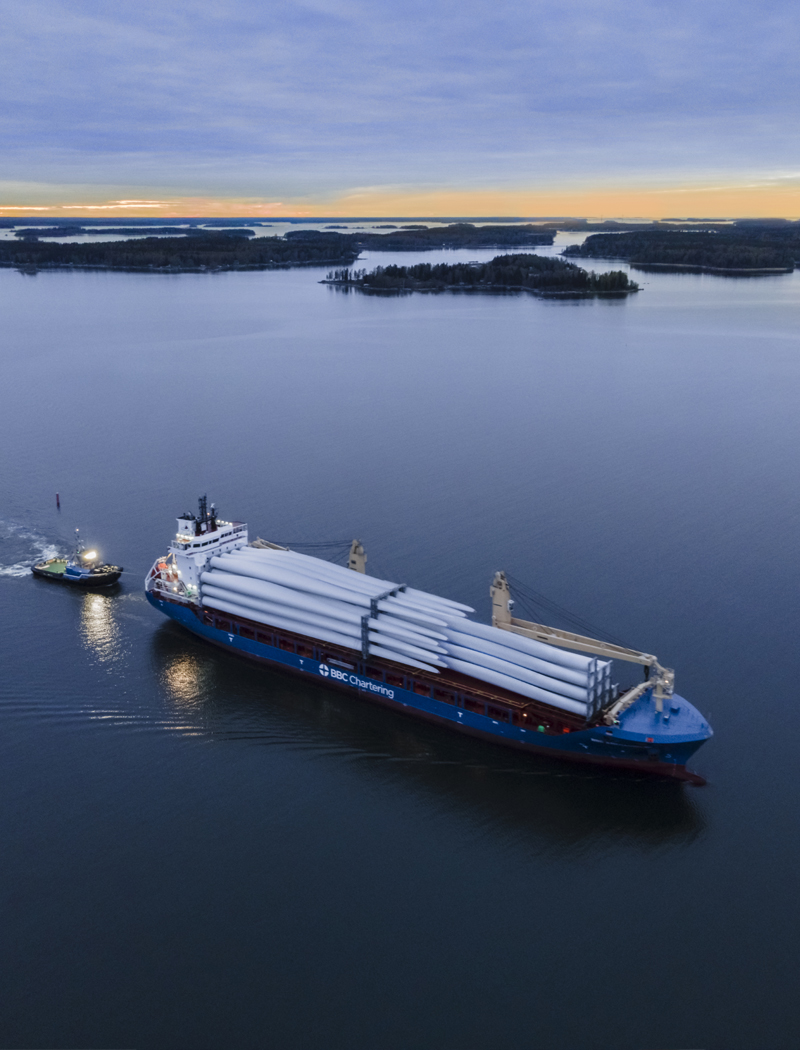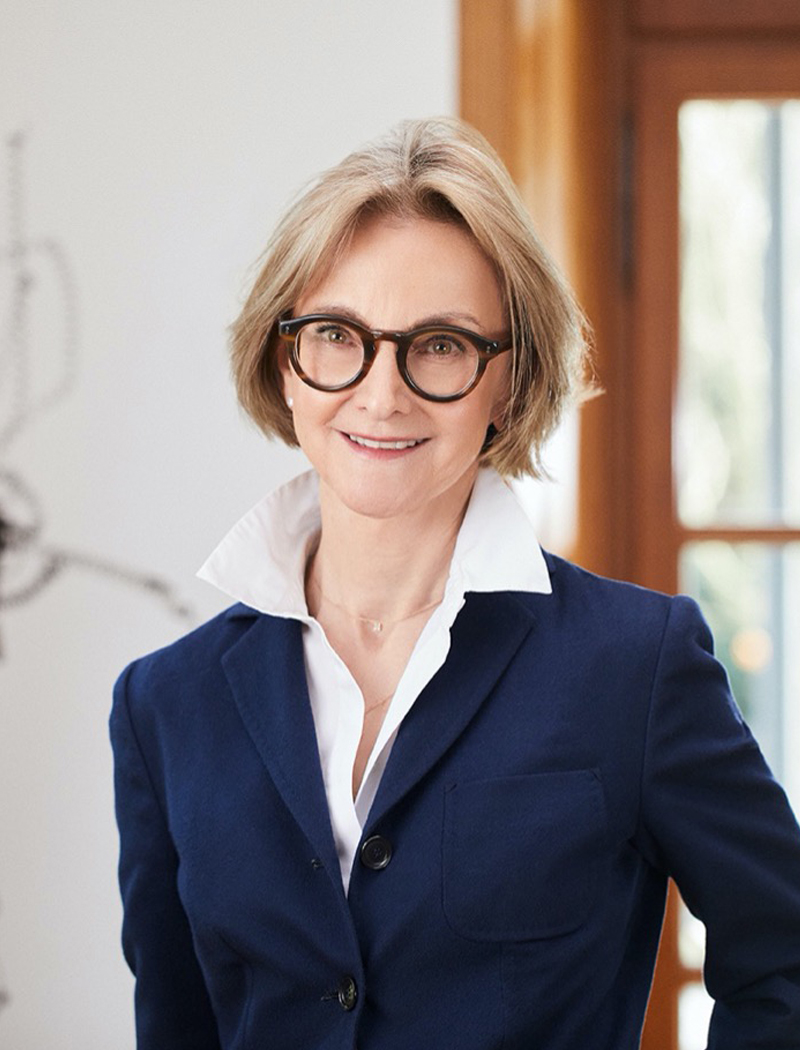Imagine this: Your newly built investment property is fully booked with long-term tenants for the next decade and is operated by the market’s leading property manager. Your new construction also has 20% more leasable space, emits nearly 40% less carbon dioxide, and is significantly more energy-efficient than comparable older buildings. Imagine contributing substantially to the energy transition already today, and also expecting a target annual return of nine to ten percent. Dreams? Not on the high seas!
The ocean as the main mode of transport
The most important mode of transport for global trade is shipping. Around 90%, or just under 10.7 billion tons, of the world’s traded goods and commodities are transported across the oceans, with this transport accounting for less than 3% of global greenhouse gas emissions. The oceans are thus the main transport routes for global trade. As demand for global goods will continue to rise steadily, it is estimated that the volume of maritime trade is likely to triple by 2050.
A market niche in merchant shipping
At the beginning of 2021, the global merchant shipping fleet numbered around 100,000 vessels of 100 gross tons or more. This usually brings to mind container ships and oil tankers. But there are other relevant types of cargo ships. Descending by gross registered tonnage in %, the global merchant shipping fleet includes:
- Bulk carriers ~43 %
- Oil tankers ~29 %
- container ships ~13 %
- miscellaneous vessel types 11 %, such as gas and chemical tankers, offshore installation vessels, ferries and passenger ships
- General cargo vessels ~4 %
Compared to the bulk carrier and container ship fleets, the general cargo ship fleet is small. And in the general cargo vessel sector, so-called multipurpose vessels are a niche. Multipurpose vessels, often equipped with heavy lift cranes, carry all kinds of cargo – from containers, bulk and dry bulk to complex, heavy infrastructure goods, such as bridgeheads, railroad cars or wind turbines and rotor blades. This makes them the Swiss army knife of shipping. But since the end of the last shipping boom a decade ago, hardly any multipurpose ships have been built. As a result, the global fleet is massively outdated and overdue for renewal. The average age of the global multipurpose vessel fleet is 19 years. The average service life of a vessel is 25 years.
Briese Schiffahrt: a pioneer in multipurpose shipping
Briese Schiffahrt, a family-owned German shipping company, is the world leader in multipurpose shipping and owns the largest fleet of over 130 vessels. It has built, bought, operated and sold more than 160 vessels over the past 30 years, generating attractive returns for its shareholders.
The group of companies also includes the chartering business, which is carried out by BBC Chartering for ocean shipping and by Briese Chartering for coastal shipping. In addition, Briese Schiffahrt operates the research vessels of the German Federal Republic and its federal states.
High demand
About five years ago, merchant shipping had reached the bottom of its crisis. Ship values and charter rates were at historically low levels. Maritime transports were cheaper than ever, cargo space was abundantly available, and supply chains functioned like Swiss clockwork. Many ocean-going shipowners were forced to pull the plug in the past decade, and the competitive market consolidated. And although capital was cheap at the time and there was no talk of inflation, the market situation did not permit investment in newbuilds. The global merchant fleet was already significantly outdated, including technologically, and its renewal was long overdue, as hardly any ships had been built since the end of the last shipping boom of the noughties.
With fleet renewal overdue, it was only a matter of time before charter rates started to rise again. The pandemic-related supply chain dislocations accelerated this development. Thus, with the massive increase in charter rates, many shipping companies were now able to order new ships again.
The shipbuilding yards for merchant ships are virtually all located in Asia. Naturally, shipyards prefer to build large container ships with a lot of steel and without additional complexity, such as cranes. Thus, at present, most shipyards are fully booked with the construction of container ships with lengths up to 400 meters until the year 2024. Unfortunately, this means that no shipyard will currently accept an order to build a complex multipurpose vessel of only about 150 meters in length at an acceptable build price. The renewal of the global multipurpose ship fleet has therefore been postponed for another few years, and its average age continues to increase.
Ships ordered with foresight
Looking ahead to this development, Briese Schiffahrt has already secured ten multi-purpose vessels of the latest generation in 2018. Compared to the most widely used workhorse in the industry, the F-type, the new Briese F-500s generate up to 40% less CO₂ emissions and consume up to 27% less fuel. Cargo space has been increased to ~17,600 m³ and deck area to ~1,800 m². The two cranes can lift loads of up to 250 tons each (+108%) or up to 500 tons in combination. Deliveries of the new Briese F-500 type started during 2020 and will run until the end of 2023.
Investing in ships
Professional and institutional Swiss investors, such as entrepreneurs and managers, wealthy private individuals, family offices, pension funds, etc., have substantial and direct stakes in each of the delivered ships of this newbuilding series. In September, Univest Family Office became the first investor to indirectly participate in the business success of the latest ship of this newbuilding series – BBC Manila – via a securitized and bankable certificate solution.
Participation in a ship by means of a certificate is a novelty on the Swiss market. The privately placed structured product in the form of an Actively Managed Certificate (AMC) is an innovative solution that allows investors to comfortably and efficiently participate in the success of Briese Schiffahrt over the next years. The AMC was issued by Ventum Group Issuer PCC Ltd, Guernsey, and is managed locally in Switzerland by Briese Schiffahrt (Schweiz) AG.
Guaranteed full capacity utilization
Briese Schiffahrt guarantees full employment of the ship during the term of the certificate. Already today, the Briese Schiffahrt fleet delivers every second wind turbine across the world’s oceans. The future of the new Briese F-500 is even more promising as not many multipurpose vessels can carry the new generations of wind turbines with rotor blades over 107 meters long – and wind power will experience exponential growth. The new F-500 giant is also eco-efficient and ready for the future. That’s because the World Maritime Organization (IMO) will introduce another set of new regulations and milestones starting in 2023 to reduce ship emissions and carbon intensity for all ships by 2030.
Equipped for the future
Furthermore, the EU plans to include maritime shipping in its Emissions Trading Scheme (EU ETS) in the coming years. Many ships will only be able to comply with the upcoming regulations by throttling their sailing speeds. Reduced transport speeds and low newbuilding activity will lead to a further shortage of transport capacity, while increasingly government-funded infrastructure projects will look for transport solutions. Those in possession of latest generation multipurpose vessels will want to hold on to them for the long term.
The author, Patric Käser, is co-founder and managing director of Briese Schiffahrt (Schweiz) AG. He started his professional career at Swiss Bank Corporation in Basel as an apprentice, where he was allowed to finance Swiss Rhine vessels, among others. For over two decades Patric Käser worked in investment banking in Switzerland and abroad, where he also developed his interest in the freight forwarding, transport and logistics sector.


